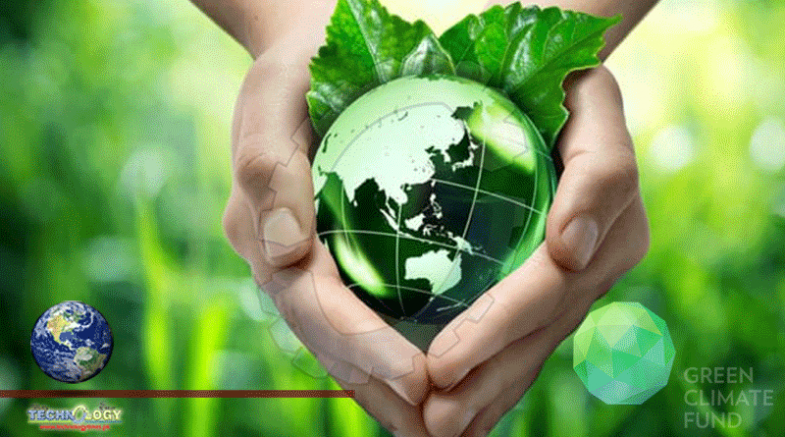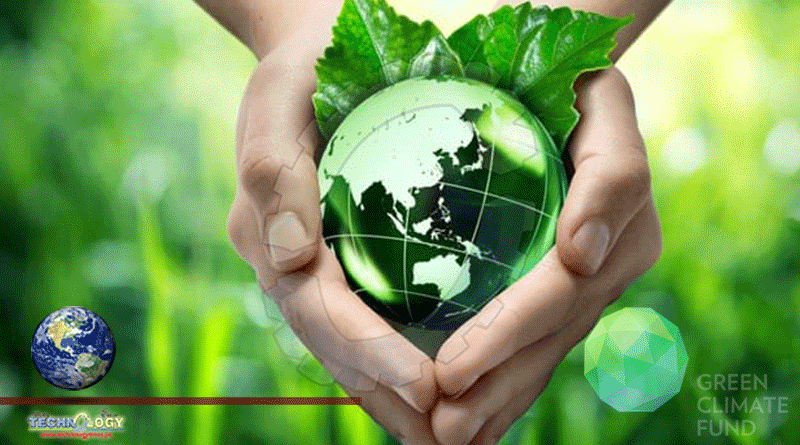In Stride With The Green Bond Offering, EQUINIX Developed A Green Finance Framework Based On The Green Bond Principles

Climate change didn’t take a break for the pandemic – and neither did the technology titans and service providers in their fight to slow the effects of climate change. Despite growing pessimism about the outlook for global warming, 2021 has positive potential as 2020 saw some of the biggest names – and deepest pockets – in the tech industry throw their weight behind renewable energy projects and corporate climate commitments to drive seismic, near-term reductions in carbon pollution. And while this is not a comprehensive list of 2020 climate change commitments or actions, it does provide a look into how some of the most influential tech companies are shaping a greener backbone of the future global economy.
Amazon
On the path to power its operations with 100% renewable energy by 2025, Amazon hit 127 renewable energy projects and declared itself the biggest corporate buyer of renewable energy in 2020. The e-commerce juggernaut also added rival Microsoft, consumer-goods giant Unilever, and 11 other companies to its Climate Pledge initiative, which commits signatories to meet the goals of the Paris climate agreement 10 years ahead of schedule.
AT&T
AT&T committed to be carbon neutral across its entire global operations by 2035. To get there, the company plans to virtualize network functions, transition to a low-emissions fleet, accelerate energy efficiency and network optimization efforts, expand efforts to drive sustainable feature film and TV production, support the renewable energy marketplace, and invest in carbon offsets. AT&T also stepped up its efforts to be more resilient to the impacts of climate change by expanding the scope of its Climate Change Analysis Tool (CCAT) tool to cover the entire contiguous U.S.
Cisco
Cisco achieved 100% renewable energy for its U.S. operations this fiscal year. The networking giant also stepped up its commitment to reduce waste production with the relaunch of its Product Takeback and Reuse program. Looking ahead to 2025, the vendor announced four new goals:
- 100% of new Cisco products and packaging to incorporate circular design principles;
- 20% decrease in the use of virgin plastic (FY18 base year);
- 50% improvement in product packaging cube efficiency (FY19 base year);
- 75% reduction in Cisco packaging foam use measured by weight (FY19 base year).
Commvault
Commvault formally joined the ranks of the Business Avengers Program, a coalition that brings together 17 global companies to deliver on the 17 UN Sustainable Development Goals (SDGs) agreed to by every UN nation by 2030. The vendor suited up to tackle SDG 12: responsible consumption and production.
Dell Technologies
Dell Technologies announced a “moonshot goal” for 2030 to advance the circular economy that includes: reusing or recycling a product for every new purchase, ensuring 100% recycled or renewable materials make up its packaging, and building recycled materials into more than half of its products’ contents.
Equinix
Equinix issued $1.85 billion in bonds, $1.35 billion of which were included in its inaugural green bond offering. In stride with the green bond offering, Equinix developed a Green Finance Framework based on the Green Bond Principles and Green Loan Principles, a set of guidelines that promote transparency and integrity in green debt disclosures. The colocation provider also received the U.S. Environmental Protection Agency’s 2020 Green Power Partner of the Year.
Google pledged to run all of its worldwide data centers and corporate campuses on 100% carbon-free power by 2030. The carbon commitment followed the company’s Earth Day investment in its carbon-intelligent computing platform, which will optimize scheduling of compute tasks to run when low-carbon power sources, like wind and solar, are most plentiful. Additionally, Google Cloud partnered with Unilever to improve its product sourcing strategy and advance sustainable business practices. The two companies are working on the first commercial application of Google Cloud and Google Earth Engine to raise sustainable commodity sourcing standards using cloud computing with satellite imagery and AI to build a more holistic view of the forests, water cycles, and biodiversity that intersect with Unilever’s supply chain
HPE
Hewlett Packard Enterprise has long championed its circular economy initiatives, which aim to eliminate waste by using products as long as possible and then recovering materials at the end of life for reuse in new products. According to the annual HPE Living Progress Report, nearly 4 million were assets returned to HPE’s Technology Renewal Centers in 2019, of which 88% were refurbished and sold to new customers.
IBM
IBM said it cut operational carbon dioxide (CO2) emissions by nearly 40% since 2005, putting it ahead of schedule to reach that amount by 2025. Additionally, nearly half of its electricity consumed in 2019 was from renewable sources, according to the technology giant’s 30th annual corporate environmental report. IBM President Jim Whitehurst explained the company will be expanding investments in renewable energy to cut down its CO2 emissions with plans to cut emissions by 40% by 2025. In recent years IBM has worked with Plastic Bank to develop a blockchain-powered system to convert plastic into a new kind of currency that users can exchange for goods such as food or diapers. The company also partnered with Daimler to use quantum computing to accelerate the development of next-generation batteries.
Intel
Intel in 2017 announced a goal to restore 100% of its global water use. The chip manufacturer surpassed the 1-billion-gallons recycled mark at its biggest water facility in Hillsboro, Oregon this year. Under its global water strategy, Intel pledged to achieve net positive water use by 2030 through conserving 60 billion gallons of water and funding external water restoration projects. The milestone underscores the company’s efforts to restore 100% of its global water use.
Microsoft
Microsoft announced plans to become “water positive,” meaning it will replenish more water than it consumes, by the end of the decade. The eco-promise followed just a few months after Microsoft and other major companies launched the Transform to Net Zero Coalition. The partnership will help Microsoft meet its goal of shifting to 100% renewable energy by 2025 following its January promise to be carbon negative by 2030 and wipe out its carbon footprint by 2050. Microsoft also explored underwater data centers. The vendor retrieved Project Natick, its shipping-container-size data center, from its two-year, 117-foot dive to seafloor off Scotland’s Orkney Islands. And on Earth Day Microsoft announced the second phase of its AI for Earth program with a new biodiversity initiative in the form of a “Planetary Computer.” The goal is to use big data and digital technology to improve environmental decision making.
Nokia
Nokia began recalibrating a new emissions targets after making substantial progress on its original 2017 goal. The vendor said it remains on track to meeting those original targets of 75% reduction of CO2 emissions for products in use by 2030 and a 41% reduction in operational CO2 emissions. Nokia also outlined its commitment to fight climate change and realize its vision of an ethical and sustainable 5G world in Flash forward: Life in 2030.
VMware
VMware unveiled 30 environmental, social, and governance (ESG) goals as part of its 2030 agenda. The vendor committed to achieving net-zero carbon emissions, thus decarbonizing its digital infrastructure from the product ecosystem to supply chain operations. The target is to cut emissions by 50% by 2030, based on its 2018 baseline. It’s also looking to engage 75% of its suppliers by spend to reduce their emissions by setting science-based targets by 2024, and procuring 100% of their power from renewable energy sources. VMware also partnered with the U.S. National Science Foundation (NSF) and announced a $6 million digital infrastructure sustainability research initiative calling on academic research groups to present a new generation of innovation to clean up IT’s digital footprint and contributions to climate change.
This news was originally published at SDX Central
